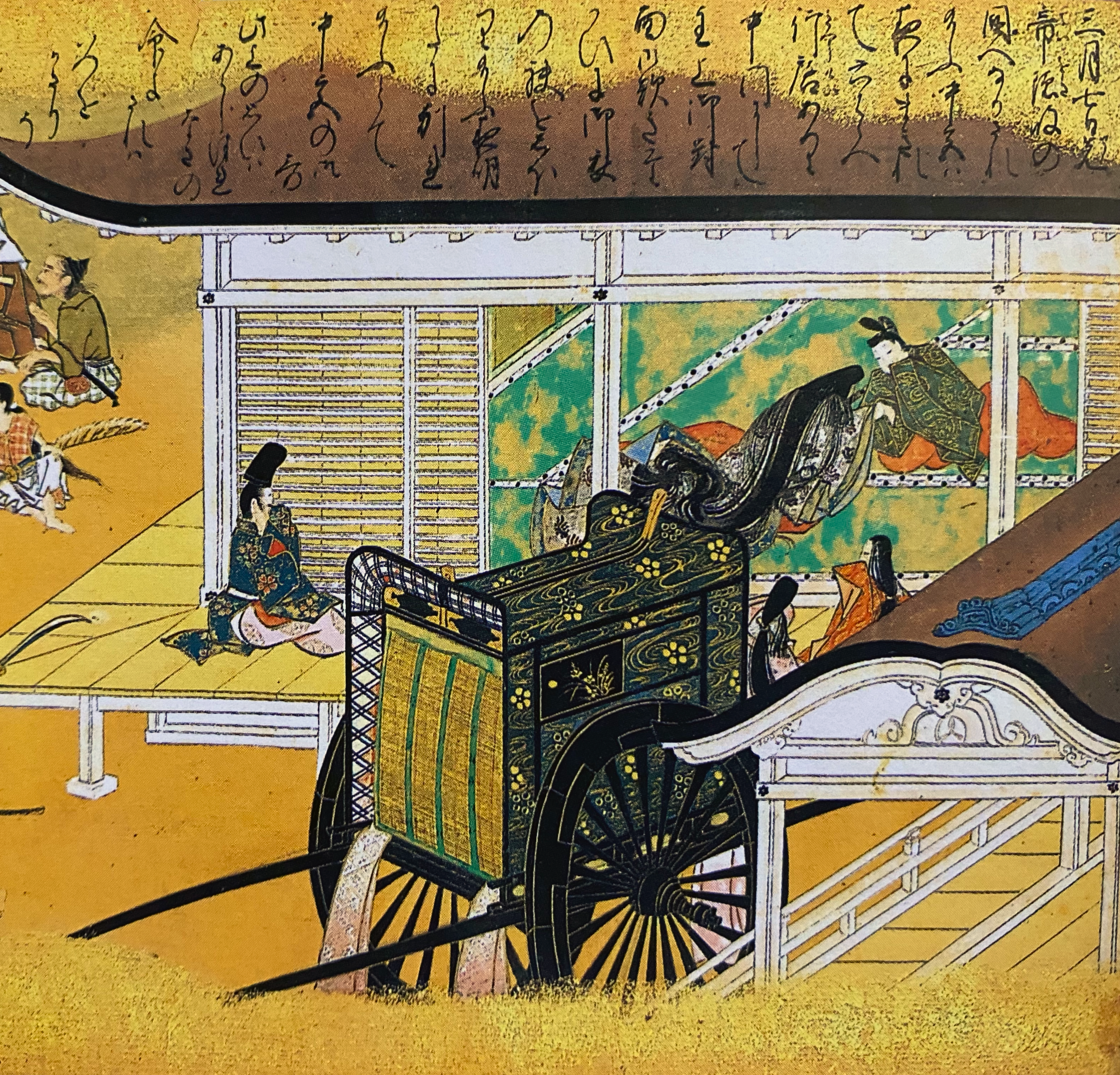Saionji no Kishi on:
[Wikipedia]
[Google]
[Amazon]
, or more formally , was an Empress consort of Japan. She was the consort of Emperor Go-Daigo of Japan.Mori Shigeaki. Go-Daigo tennō: nanboku-chō dōran o irodotta haō (後醍醐天皇: 南北朝動乱を彩った覇王). Tokyo: Chūōkōronshinsha, 2000. She was given the regnal name () in 1332 when her husband was banished, but it was abolished when he returned to the chrysanthemum throne in 1333. Later she was given the second regnal name upon her death. She was also an excellent poet, 14 of whose '' waka'' poetry are included in '' chokusen wakashū'' (imperially-commissioned anthologies).
 She was born as the 3rd daughter of Saionji Sanekane (西園寺実兼). She
She was born as the 3rd daughter of Saionji Sanekane (西園寺実兼). She
Biography
 She was born as the 3rd daughter of Saionji Sanekane (西園寺実兼). She
She was born as the 3rd daughter of Saionji Sanekane (西園寺実兼). She eloped
Elopement is a term that is used in reference to a marriage which is conducted in a sudden and secretive fashion, usually involving a hurried flight away from one's place of residence together with one's beloved with the intention of getting ma ...
with then-Crown Prince Takaharu (later Emperor Go-Daigo) in 1313 and officially got married with him in 1314. Prince Takaharu acceded to the throne as Emperor Go-Daigo in the 2nd lunar month, 1318 and Kishi was made in the 4th lunar month of the same year. She was made Empress consort (chūgū) in the 8th lunar month, 1319.
Although vol. 1 of the historical epic '' Taiheiki'' tells she lost the emperor's favor because of her lady-in-waiting Ano Renshi (mother of Emperor Go-Murakami), Hiromi Hyodo, a Japanese literature researcher, claims that the story is the imitation of a poem by Bai Juyi
Bai Juyi (also Bo Juyi or Po Chü-i; ; 772–846), courtesy name Letian (樂天), was a renowned Chinese poet and Tang dynasty government official. Many of his poems concern his career or observations made about everyday life, including as g ...
, and in the real history Kishi and Go-Daigo were a close and affectionate couple. Other sources such as vol. 4 of the same epic (as later illustrated in ''Taiheiki Emaki'', vol. 2), '' Masukagami'', several historical documents, and poetry by the couple's own hands, show the deep intimacy between the emperor and empress.
Emperor Go-Daigo was captured and exiled to the Oki Islands by the Kamakura shogunate in the 3rd lunar month, 1332 and Kishi became a Buddhist nun in the 8th month the same year. Emperor Go-Daigo escaped from the Oki Islands and returned to Kyoto in the 6th lunar month, 1333. After that, Kishi resumed the title of Empress consort (chūgū) and a little later was made . She died on the 10th lunar month 12th, 1333.
Issue:
* princess (1314–?), died young
* Imperial Princess ''Kanshi'' (懽子内親王) (Senseimon-in, 宣政門院) (1315–1362), Saiō
A , was an unmarried female member of the Imperial House of Japan, Japanese Imperial Family, sent to Ise, Mie, Ise to serve at Ise Grand Shrine from the late 7th century until the 14th century. The Saiō's residence, , was about 10 km north ...
at Ise Shrine; later, married to Emperor Kōgon
Notes
Japanese empresses 1333 deaths Emperor Go-Daigo 14th-century Buddhist nuns Japanese Buddhist nuns Medieval women poets Japanese women poets People from Kyoto {{Japan-royal-stub